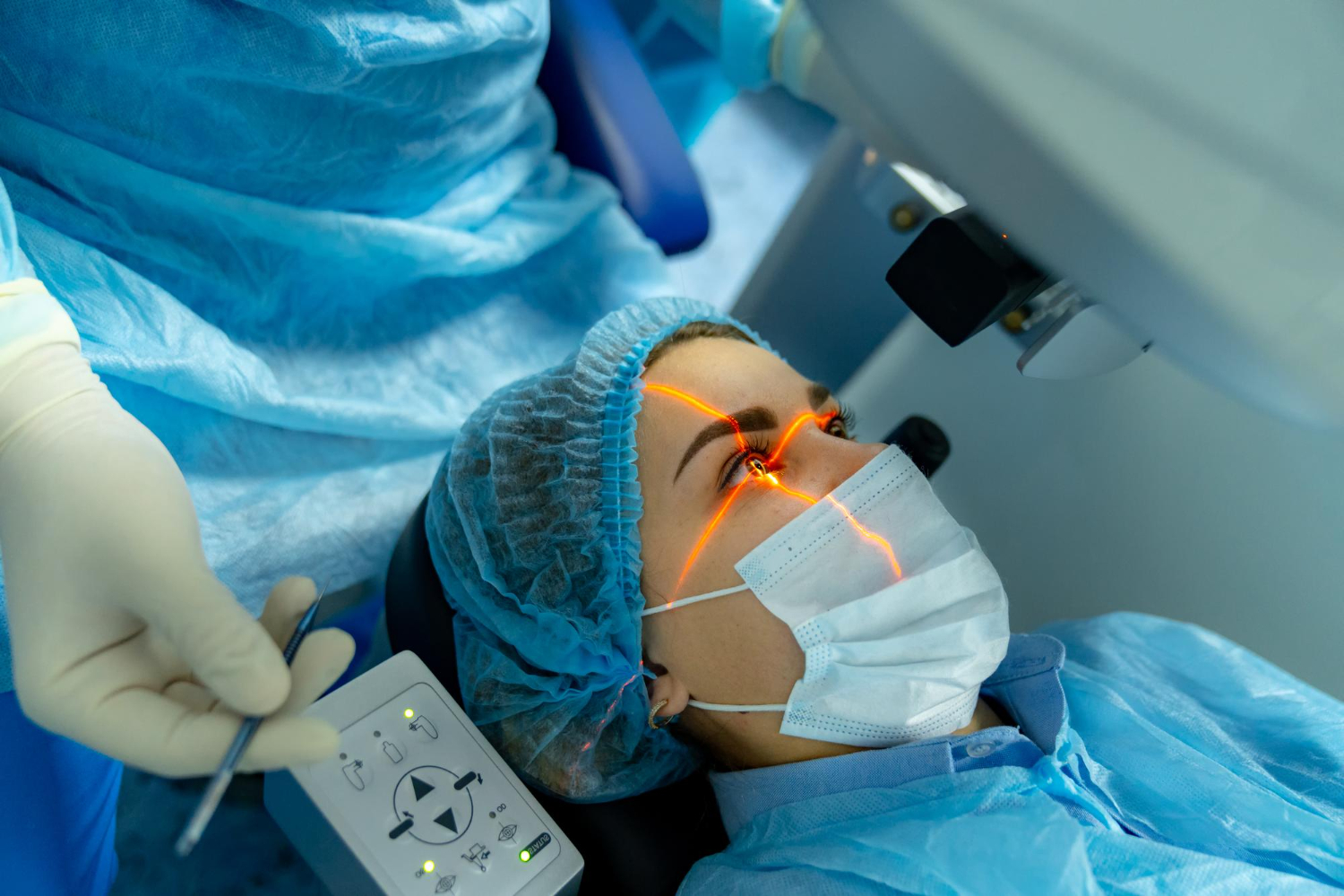Cataract surgery is a common procedure that can significantly improve vision for those suffering from cataracts. However, the cost of this surgery can vary dramatically from one patient to another. Understanding the factors that influence these costs is essential for patients considering their options. This article will explore the key elements that contribute to the varying prices of cataract surgery, providing insight into what patients can expect.
Understanding Cataracts and Their Treatment
Cataracts occur when the lens of the eye becomes cloudy, leading to blurred vision and, in severe cases, blindness. The primary treatment for cataracts is surgery, which involves removing the cloudy lens and replacing it with an artificial intraocular lens (IOL). While this procedure is generally safe and effective, the cost can differ based on several factors.
The cataract surgery cost can vary widely due to a multitude of factors, including the type of surgery, geographical location, choice of lens, and the surgeon’s experience. Patients considering cataract surgery should take the time to research their options, consult with healthcare professionals, and understand their insurance coverage to make informed decisions about their treatment.

The Importance of Early Diagnosis
Early diagnosis of cataracts can significantly influence the overall cost of treatment. Patients who seek medical advice promptly may require less extensive surgery, which can be less expensive. Conversely, those who delay treatment may face more complicated procedures, leading to higher costs due to additional resources and time needed during surgery.
Types of Cataract Surgery
There are different types of cataract surgery, including phacoemulsification and extracapsular cataract extraction. Phacoemulsification, the most common method, uses ultrasound to break up the cataract, allowing for a smaller incision and quicker recovery. This technique is typically less expensive due to its efficiency and reduced recovery time. In contrast, extracapsular extraction may involve a longer hospital stay and higher surgical fees, thus increasing the overall cost.
In addition to these surgical methods, advancements in technology have led to the development of femtosecond laser-assisted cataract surgery, which offers enhanced precision in the surgical process. This technique utilises laser technology to perform key steps of the surgery, potentially improving outcomes and reducing the risk of complications. While this method may come with a higher price tag, many patients find the benefits, such as reduced reliance on glasses post-surgery, to be worth the investment. Learn more about technology on https://aimseducation.edu/blog/the-impact-of-technology-on-healthcare
Post-operative care is another critical aspect of cataract treatment that can affect overall costs. Patients are often required to attend follow-up appointments to monitor their recovery and ensure that the new lens is functioning correctly. These visits can add to the financial burden, especially if additional treatments or interventions are needed. Moreover, patients may need to adjust to their new vision, which can involve purchasing new eyewear or undergoing further vision correction procedures, thus contributing to the overall expense associated with cataract treatment.
Geographical Location and Its Impact
The geographical location of the surgery plays a significant role in determining the cost. Prices can vary widely between urban and rural areas, as well as across different states and territories. Urban centres often have higher living costs, which can translate to increased fees for medical services, including cataract surgery. In metropolitan areas, the demand for healthcare services is typically higher, leading to a more competitive market among providers. This competition can sometimes result in better pricing options for patients, but it can also mean that patients may feel pressured to select from a range of high-cost services that may not be necessary.
Regional Healthcare Systems
In Australia, the healthcare system is a mix of public and private services. Patients opting for surgery in the public system may incur little to no cost, depending on their eligibility. However, those choosing private healthcare may face varying costs based on the surgeon’s fees, the facility where the surgery is performed, and the type of lens used. Understanding the differences between these systems can help patients make informed decisions about their care. Additionally, the waiting times for surgery in the public system can be significantly longer, which may compel some individuals to consider private options despite the higher costs. This decision often hinges on the urgency of the surgery and the potential impact on the patient’s quality of life.
Availability of Specialists
The availability of qualified ophthalmologists can also affect the cost of cataract surgery. In areas with a high concentration of specialists, competition may drive prices down. Conversely, in regions where specialists are scarce, patients may find themselves paying a premium for their surgery. This disparity can lead to significant differences in the overall cost of cataract treatment. Furthermore, the level of expertise and experience of the surgeon can also play a crucial role in determining the price. Highly regarded specialists with extensive training and a strong track record may charge more for their services, reflecting their skills and the outcomes they achieve. Patients should weigh these factors carefully, as the choice of surgeon can have lasting implications on their recovery and satisfaction with the procedure.
Type of Intraocular Lens (IOL) Selected
The choice of intraocular lens (IOL) is another critical factor influencing the cost of cataract surgery. Standard monofocal lenses are typically the least expensive option, providing good vision at one distance but often requiring glasses for other distances. However, premium lenses, such as multifocal or toric lenses, can significantly increase the cost of surgery. These premium options are designed to cater to a wider range of visual needs, allowing patients to experience clearer vision at various distances, which can be particularly beneficial for those who lead active lifestyles or wish to reduce their reliance on corrective eyewear.

Benefits of Premium Lenses
Premium lenses offer several advantages, including improved vision at multiple distances and reduced dependence on glasses. While the initial cost may be higher, many patients find that the benefits of enhanced vision and quality of life justify the expense. Multifocal lenses, for instance, allow patients to see clearly both up close and far away, making everyday tasks such as reading, driving, and using digital devices much more convenient. Additionally, toric lenses are specifically designed to correct astigmatism, providing a more comprehensive solution for patients with this common refractive error. It is essential for patients to discuss their options with their ophthalmologist to determine the best lens for their needs and budget, as well as to understand the potential trade-offs associated with each type of lens.
Insurance Coverage and Out-of-Pocket Costs
Insurance coverage can also play a significant role in determining the final cost of cataract surgery. In Australia, Medicare may cover a portion of the costs associated with cataract surgery, but patients should be aware that additional fees may apply, especially for premium lenses or private hospital stays. Understanding the specifics of one’s insurance plan is crucial for anticipating out-of-pocket expenses. It is advisable for patients to consult with their insurance provider prior to surgery to clarify what is covered and what costs they may need to bear themselves. Furthermore, some clinics offer financing options or payment plans to help manage the financial burden, making it easier for patients to access the best possible care without undue stress. To read more about stress click here.
Surgeon’s Experience and Reputation
The experience and reputation of the surgeon can have a considerable impact on the cost of cataract surgery. Highly experienced surgeons may charge more for their services, reflecting their expertise and track record of successful outcomes. Patients may feel more comfortable paying a premium for a surgeon with a strong reputation, knowing they are in capable hands. It is not uncommon for surgeons who have performed thousands of procedures to have a more refined technique, which can lead to quicker recovery times and fewer complications. Additionally, many reputable surgeons often engage in continuous education and training, keeping abreast of the latest advancements in cataract surgery techniques and technology, which can further enhance patient outcomes.
Patient Outcomes and Satisfaction
Choosing a surgeon with a proven history of positive patient outcomes can lead to higher satisfaction rates. While the initial cost may be higher, the long-term benefits of successful surgery and reduced complications can make it a worthwhile investment. Patients are encouraged to research potential surgeons, read reviews, and seek recommendations from trusted sources. Furthermore, many clinics provide before-and-after photos of previous patients, which can serve as a visual testament to the surgeon’s skill. Engaging in conversations with past patients can also provide valuable insights into their experiences, helping prospective patients to feel more informed and confident in their choices.
Consultation Fees
In addition to surgical fees, patients should consider the costs associated with consultations and follow-up appointments. Some surgeons may charge a fee for initial consultations, while others may include this in the overall price of the surgery. Understanding the full scope of costs involved can help patients prepare financially for their treatment. It’s also worth noting that some practices may offer package deals that encompass pre-operative assessments, the surgery itself, and post-operative care, which can provide a clearer financial picture. Patients should not hesitate to inquire about payment plans or financing options, as many clinics are willing to accommodate different financial situations to ensure that quality care is accessible to all.
Additional Factors Influencing Cost
Beyond the primary factors discussed, several additional elements can influence the cost of cataract surgery. These include the type of facility where the surgery is performed, the use of advanced technology, and the need for additional treatments or procedures.
Facility Fees
The facility where the surgery takes place can significantly impact the total cost. Hospitals generally charge more than outpatient surgical centres, which may offer a more cost-effective option for cataract surgery. Patients should inquire about the facility fees and consider their options carefully when choosing where to have their procedure performed.
Advanced Technology and Techniques
Utilising advanced technology, such as femtosecond laser-assisted cataract surgery, can also increase the cost. While these techniques may offer benefits such as increased precision and reduced recovery time, they can come with a higher price tag. Patients should weigh the potential advantages against the additional costs when making their decisions.
Conclusion: Making Informed Choices
Ultimately, cataract surgery can provide significant improvements in vision and quality of life. By understanding the factors that influence the cost, patients can navigate their options more effectively and choose a path that aligns with their needs and financial situation. Whether opting for public or private healthcare, the goal remains the same: to restore clear vision and enhance overall well-being.
Learn more on: Sorting Through the Cataract Lens Price List Which Option Is Right for You
